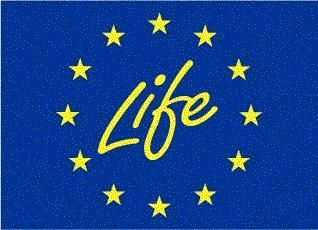2. What is the interrelationship of IPPC, EIA and SEVESO II?
The field of application of the EIA Directive is very broad and essentially covers all the categories of project likely to have significant effects on the environment. The IPPC Directive applies to industrial activities (e.g. in energy and waste sectors) and some agricultural activities. The Seveso Directive applies to establishments where dangerous substances are present. All these Directives apply to new projects and, where required to existing activities including changes and extensions. The categories of projects listed in the EIA and IPPC annexes overlap to a large degree. The EIA Directive generally covers, in Annexes I and II, all the Annex I IPPC categories of project, except for categories 3.1 (lime kilns), 6.7 and 6.8. The overlap of projects between the Seveso Directive and the EIA and IPPC Directives is less clear, but generally ‘Seveso projects’ are included in the EIA and IPPC Annexes.
|
According to Art. 18(2), second subparagraph, of the IPPC Directive, “the technical requirements applicable for the landfills … shall be fixed by the Council … in accordance with the procedures laid down in the Treaty.” This provision is mirrored by Art. 1(2) of the Landfill Directive stating that “in respect of the technical characteristics of landfills, this Directive contains, for those landfills to which Directive 96/61/EC is applicable, the relevant technical requirements in order to elaborate in concrete terms the general requirements of that Directive. The relevant requirements of Directive 96/61/EC shall be deemed to be fulfilled if the requirements of this Directive are complied with.”
As a consequence, the requirements laid down in Annex I to the Landfill Directive take the place of the emission limit values, equivalent parameters and technical measures based on best available techniques required by Art. 9 (4) IPPC in the permit conditions.
The cut-off date for the distinction between “existing” and “new” installations is 31 October 1999 under the IPPC Directive (Art. 2 point 4), 16 July 2001 under the Landfill Directive (Art. 14). For existing installations, the final date for full compliance is set by 31 October 2007 under the IPPC Directive (Art. 5), by 16 July 2009 under the Landfill Directive (Art. 14). As a consequence, the competent authority has to issue an integrated permit to existing landfills covered by the IPPC Directive before the 31 October 2007. Full compliance with the requirements of Annex I to the Landfill Directive, however, is only compulsory as of 16 July 2009. “New” landfills authorised after 16 July 2001 have to comply with these requirements from the outset. In cases of changes to a landfill, it is up to the competent authority to decide if the change is “substantial” or not, in accordance with Article 12 IPPC. Whereas any change triggers a permit update under the landfill Directive, the additional IPPC requirements (e.g. in terms of public participation) would only apply to a “substantial” change in the meaning of the IPPC Directive.
Article 13(1) IPPC Directive requires competent authorities to periodically reconsider and, where necessary, update permit conditions. This obligation is independent from pollution levels, substantial changes in best available techniques, safety requirements or new legislative provisions. No corresponding provision exists in the Landfill Directive. Any landfill also covered by the IPPC Directive must be made subject to such periodical reconsideration.
Article 6 IPPC specifies information that must be included in the application for a permit. Much, but not all, of this information is also required under the Landfill Directive (Art. 7). On the other hand, some requirements are specific to the Landfill Directive (see Article 7(i)).
It should be noted that the IPPC Directive requires information on the sources of emissions from the installation as well as the nature and quantities of foreseeable emissions into each medium and identification of significant effects on the environment (i.e. also for non-EIA projects). An application for an IPPC landfill has to comply with both the provisions of Article 6 IPPC and Article 7 of the Landfill Directive.
Article 15 IPPC requires that permit applications for new or substantially changed installations are made available to the public. The public is given the right to comment on them before the competent authority reaches its decision. The decision, a copy of the permit and of any permit updates as well as the results of release monitoring must be made available to the public. No corresponding provision exists in the Landfill Directive.
Any landfill also covered by the IPPC Directive must be made subject to public participation and information as outlined above.
Article 17 IPPC requires a transboundary information exchange where the operation of an IPPC installation is likely to have significant negative effects on the environment of another Member State. No corresponding provision exists in the Landfill Directive. In principle, any landfill also covered by the IPPC Directive should be subject to this information exchange. In practice, however, a landfill likely to have significant negative effects on another Member State should not obtain a permit according to the Landfill Directive (Article 8(a)(i) in conjunction with Annex I. Article 12 Landfill Directive providing for control and monitoring programmes as well as for the notification of any significant adverse effect constitutes an additional safeguard in this respect. It is therefore unlikely that a Member State in whose territory the permit application was submitted finds itself under the obligation to forward the information to another Member State. However, a neighbouring Member State might feel itself to be significantly affected and request information according to Article 17 IPPC.
Finally it is noteworthy that the reporting periods of the two Directives differ. Under the IPPC Directive, the first round of reporting is due in 2003, covering the years 2000 to 2002. The first report under the Landfill Directive is due in 2004 and covers the period from 16 July 2001 to the end of 2003. IPPC landfills are also subject to regular reporting of emission data according to Commission Decision 2000/479/EC on the implementation of a European pollutant emission register (EPER). |


